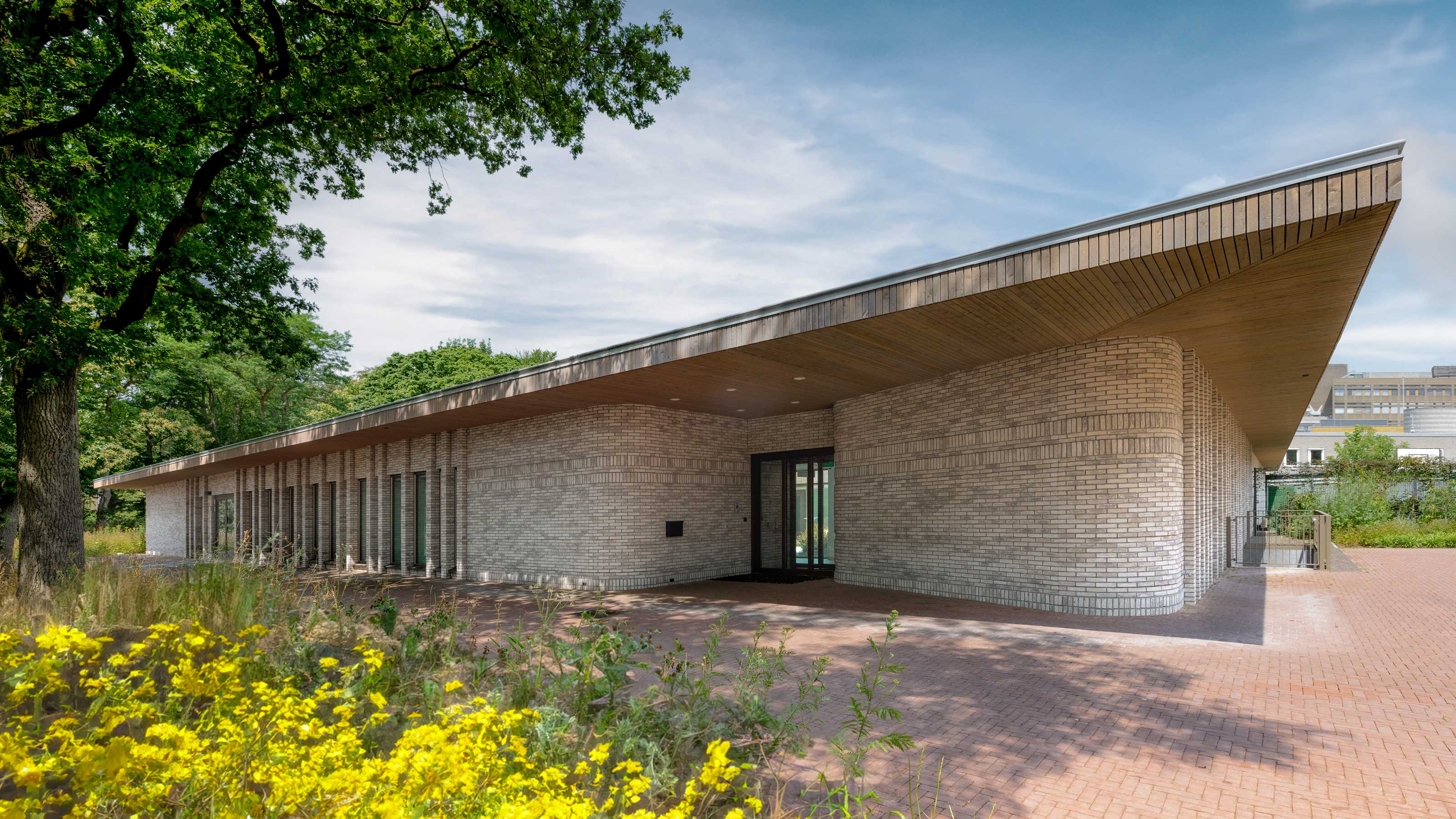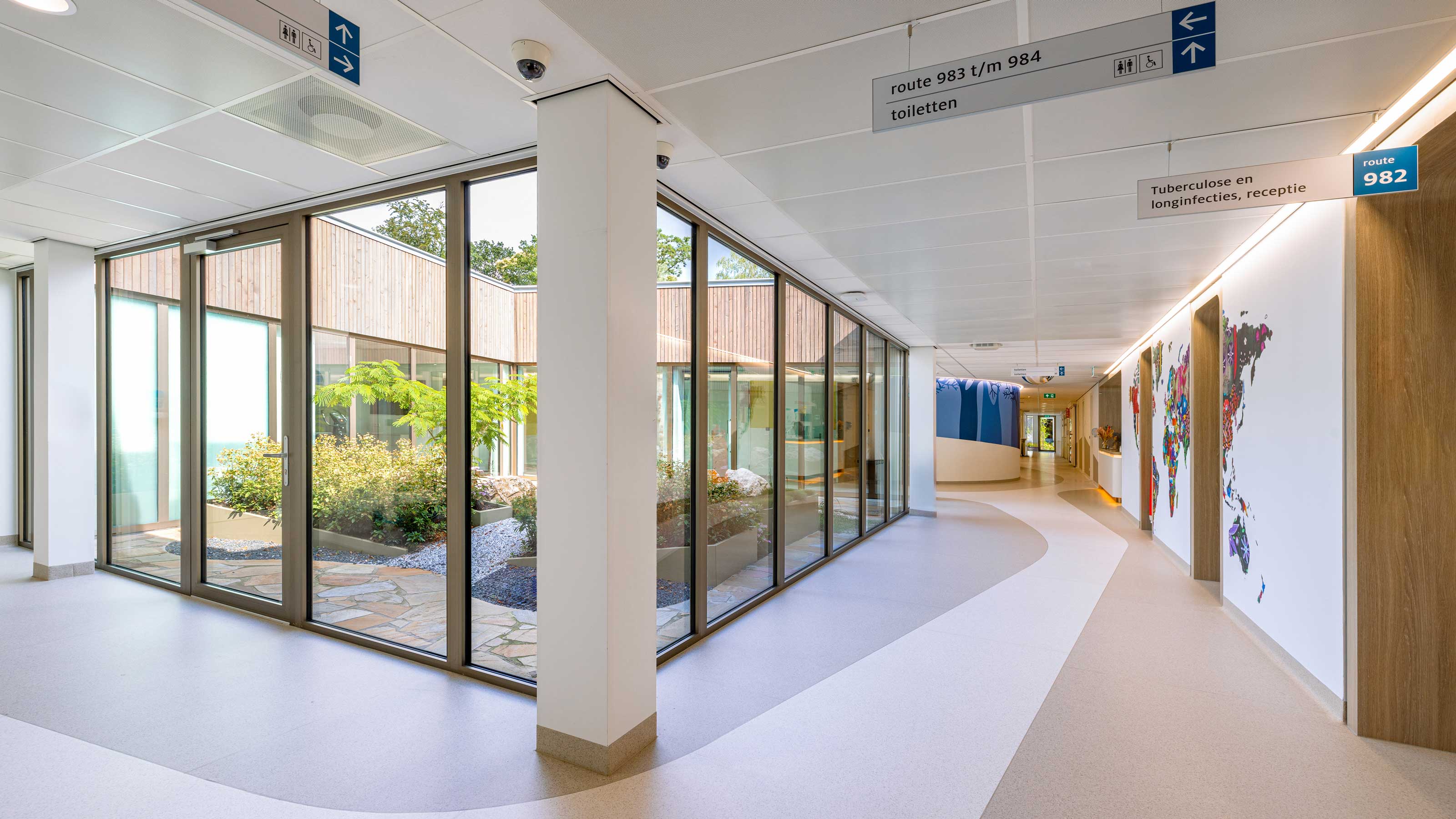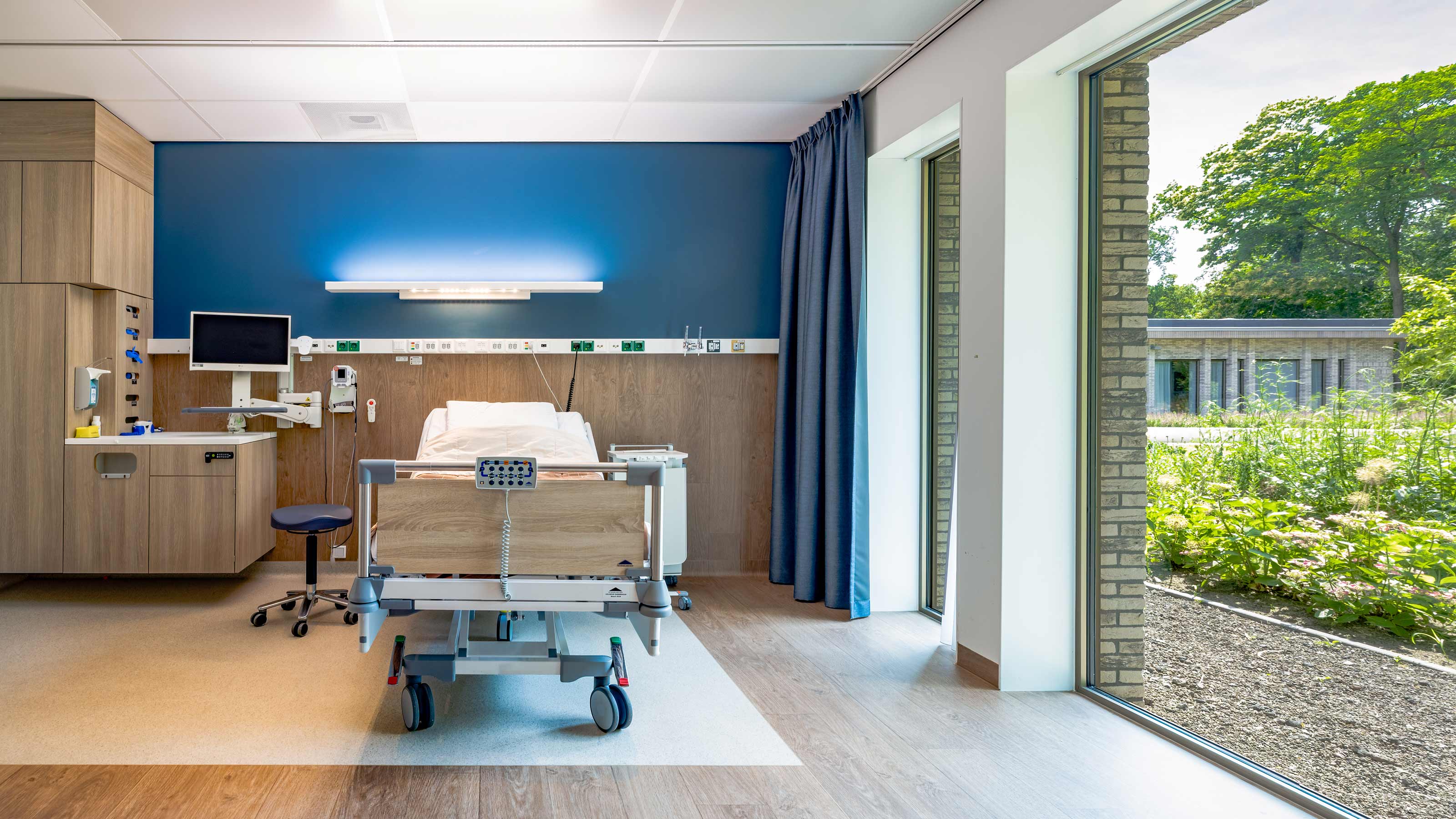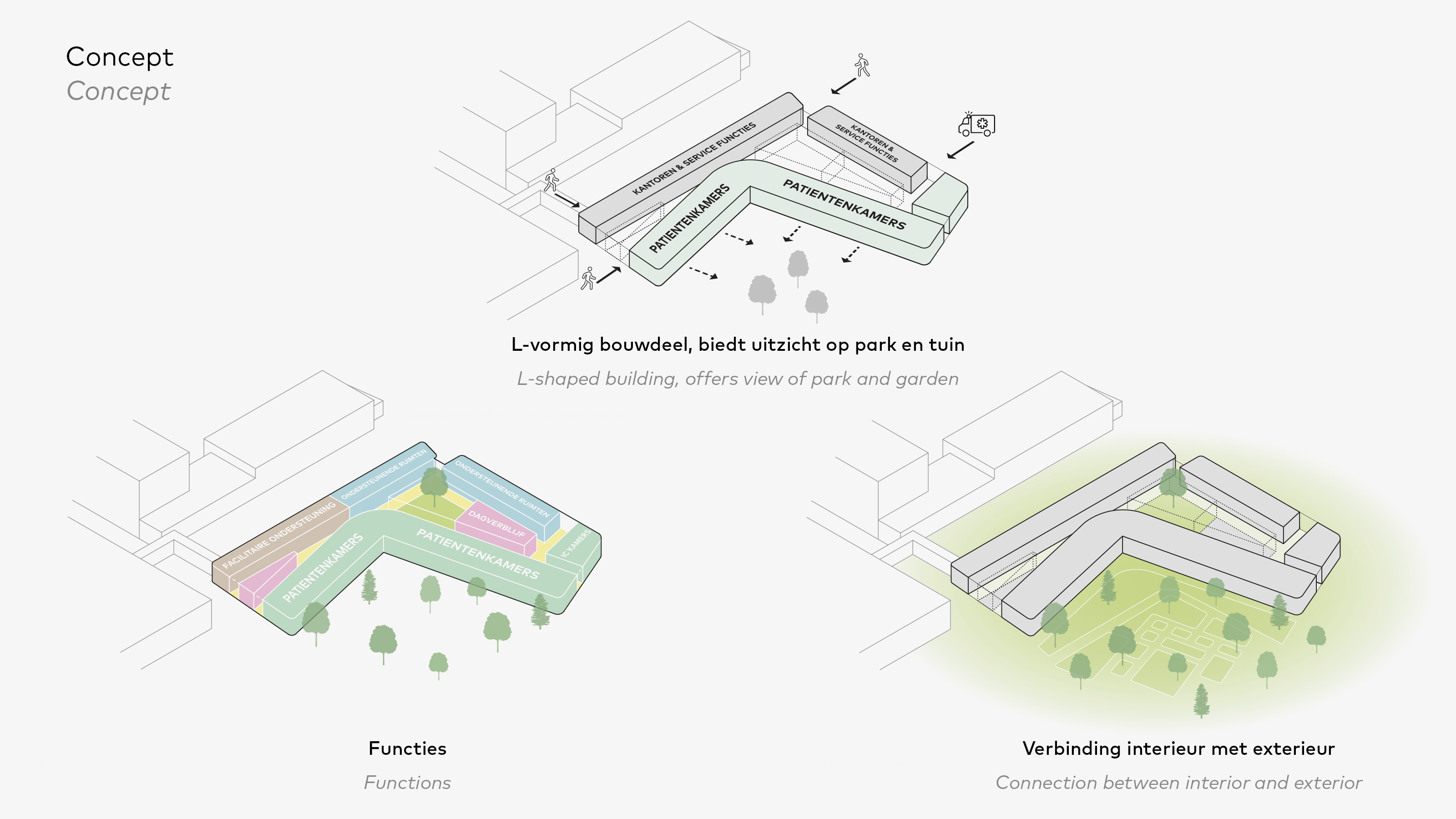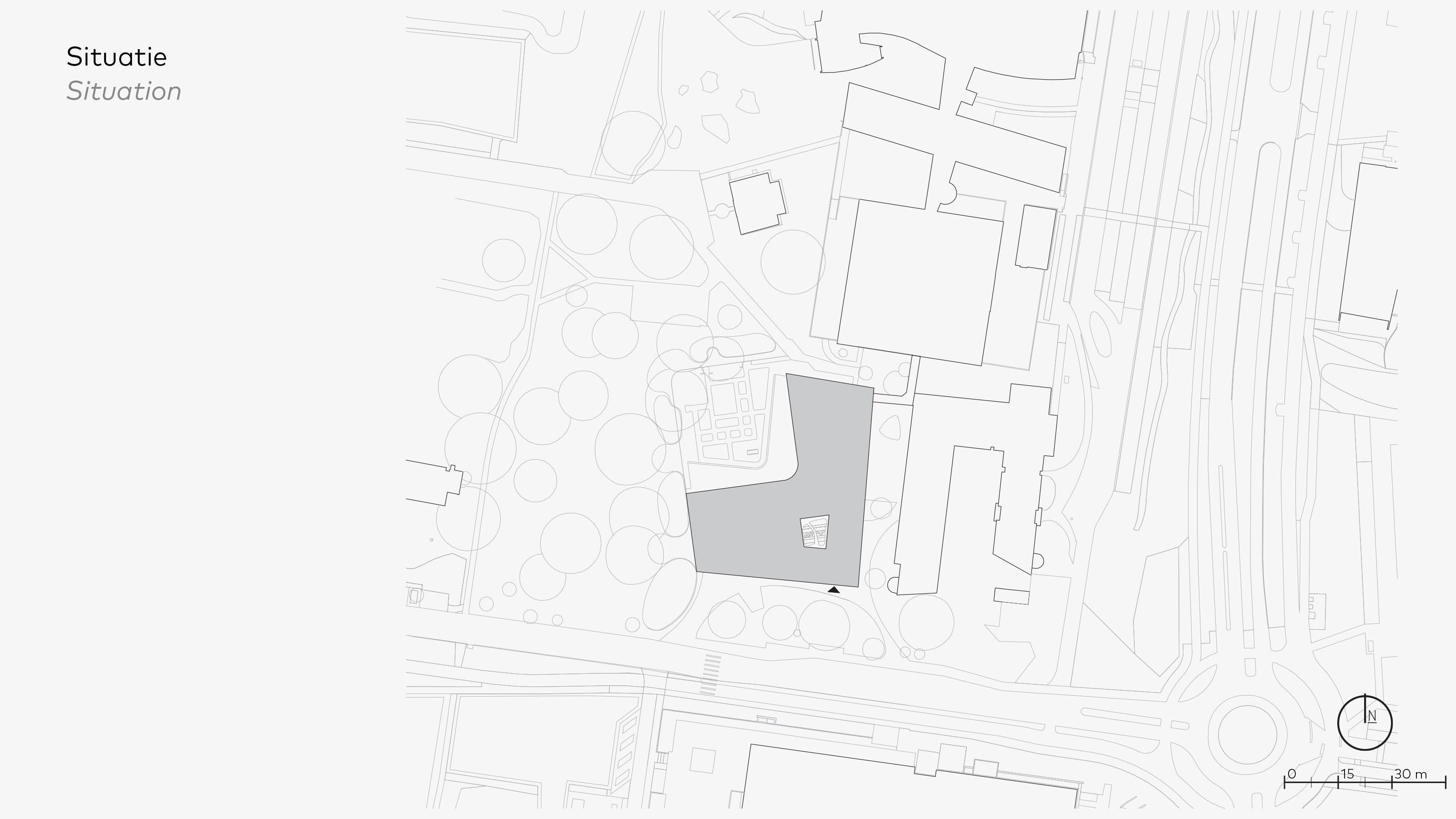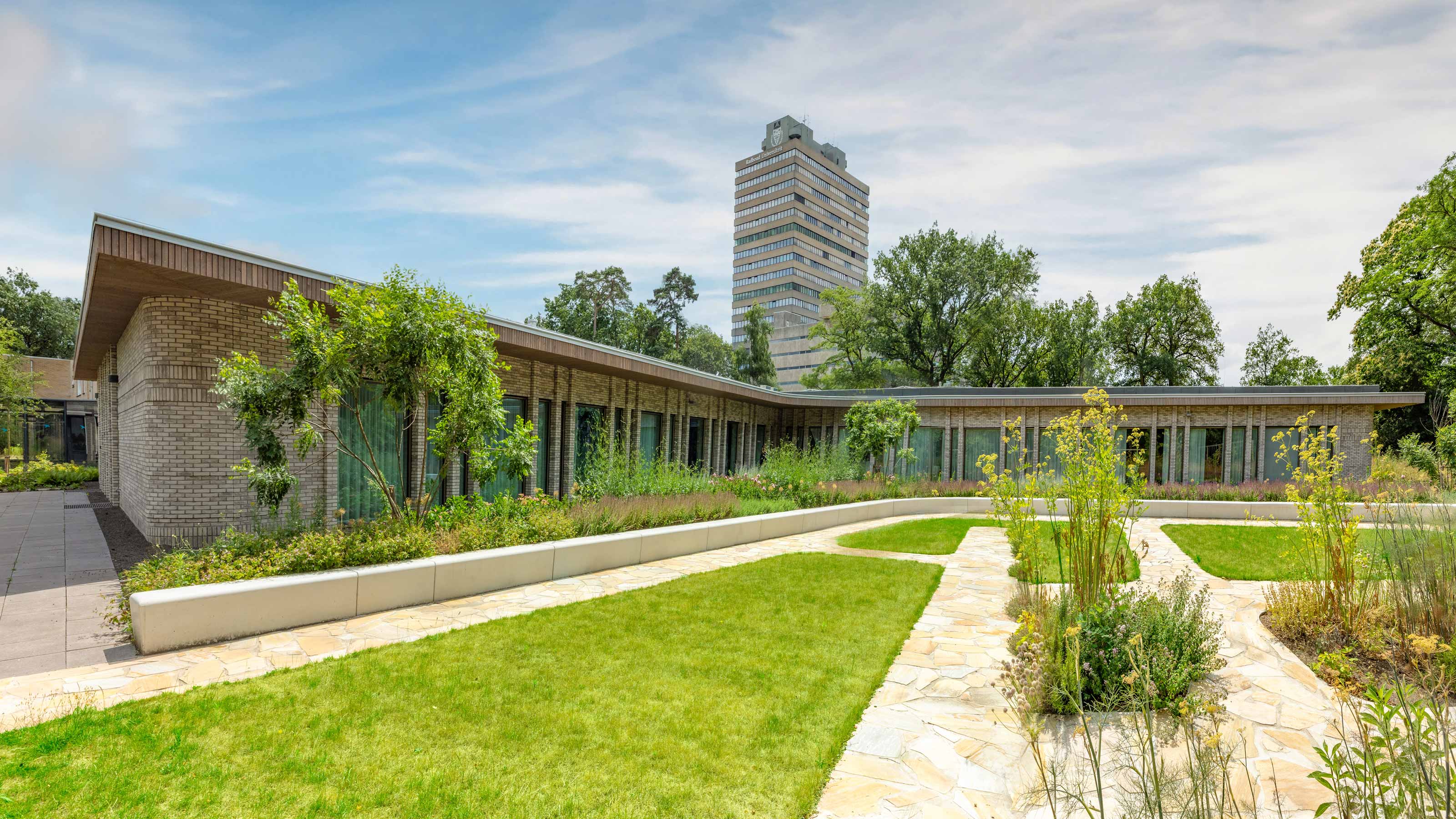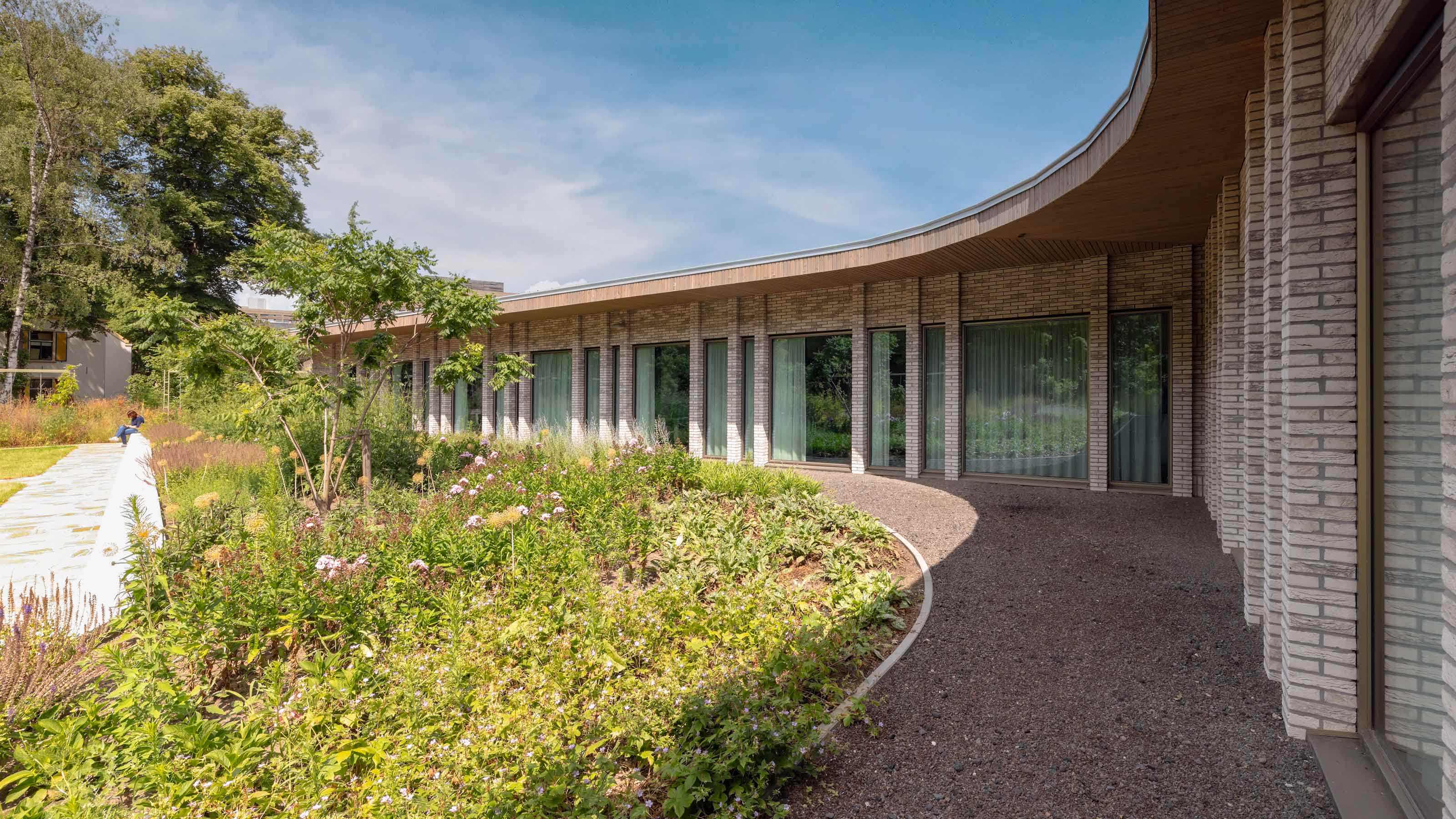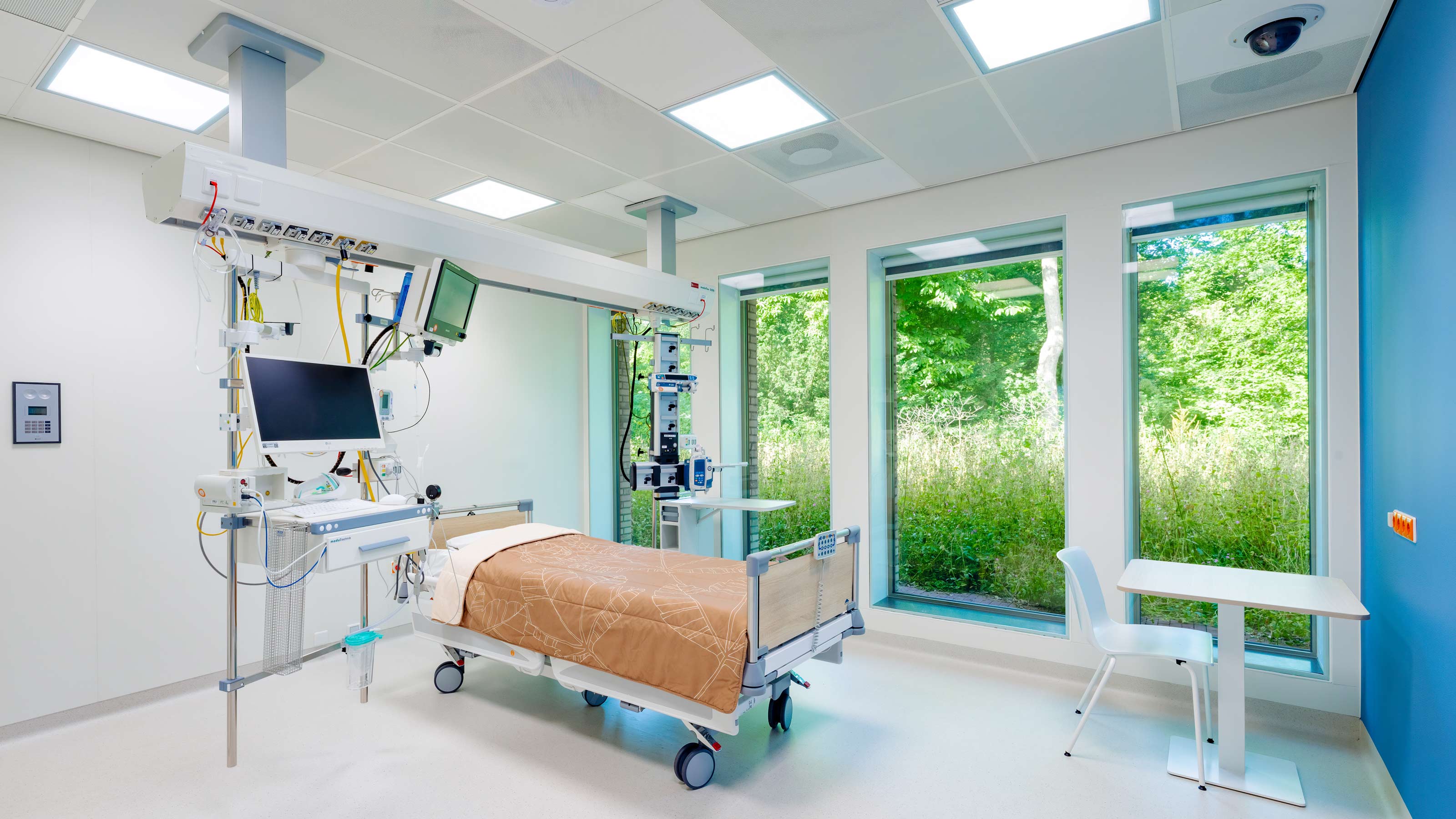Nursing and Isolation building for patients with highly infectious diseases
Radboudumc adds building to campus for treating and isolating patients with highly infectious diseases
View the entire projectThe Radboudumc boasts a number of specializations that distinguish it internationally, among them the treatment of infectious diseases. For specific highly infectious conditions, EGM has designed a separate care facility – known within Radboudumc as ‘Building P’ – which contains the High Level Isolation Unit (HLIU). This separate unit provides a safe environment for patients with an infectious condition, as well as an inspiring, healthy and, most of all, safe working environment.
Healthy recovery
The care and monitoring required in cases of infectious diseases is complex and precarious. The infectious diseases building is therefore as functional as possible. It facilitates the work of staff and the recovery of patients. The main principle that determined the location and design of the building was safety. Moreover, the building offers a combination of views and clear layout, with privacy guaranteed. Enhancing this is a spacious central patio that admits plenty of daylight, and a fine therapy garden, designed by Copijn Landscape Architects, that blends harmoniously with the surrounding green landscape.
Three safety levels
Patients are divided into three categories, each with its own unit: 7 rooms for patients with non-infectious diseases, 8 isolation rooms for patients who are known or suspected to be infected, and an isolation unit with 2 intensive care rooms for patients with highly infectious diseases such as Ebola or yellow fever. This unit has its own ambulance entrance. In the event of an infection outbreak, such as a pandemic, the entire building can be used as a cohort and isolation unit.
We are the first in the Netherlands to have pulled long-term nursing out of the hospital as a department and set it apart in a specially designed high-tech building
Guido Hendricks, medical technology advisor Radboudumc
Familiar places with domestic feel
The building, located in the south-eastern corner of the Radboudumc campus, consists of two L-shaped wings that are rotated relative to each other. Positioned between them are the day centres for the closed and open units and the enclosed patio, which serves as an outdoor area for the closed unit. The south-eastern wing aligns with the urban context of Erasmuslaan. This wing houses offices and staff facilities, logistics spaces, and in the south-western area the VHF unit (Viral Haemorrhagic Fevers), containing the two double-lock IC rooms. The north-western wing contains the remaining patient rooms, including the open ward, which offers access to a living room and a separate garden, where recuperating patients can enjoy a pleasant homely feel. Inspired by the varied backgrounds of patients and visitors, the interior is colourful, intimate yet calming, providing them with a warm welcome in a domestic setting within the context of a care-intensive environment.
Aesthetically recognizable for patients and staff
The material chosen for the building – light-beige brickwork with a relief pattern – pays homage to the style known as the ‘Bossche School’, which has traditionally featured prominently on the campus, with the distinctive style that EGM has developed for the Radboudumc. The calm and unified facade composition features well-defined piers and protruding brickwork courses. The visually defining large roof overhang offers optimal passive solar shading. The ratio of open to closed areas of facade and the orientation of the building are optimized for both daylight admission and views of the therapy garden. As a result, the wellbeing of patients and the people who work there is supported to the full.
The building meets all our safety and quality requirements, for both patients and staff. There is a dedicated entrance for patients and visitors, as well as a separate ambulance entrance. This ensures that patients do not come into contact with other departments, which is, of course, safer
Chantal Bleeker, Professor of Infectious Disease Outbreaks
Sustainable and future-proof
In the design of the building for infectious diseases, we have taken into consideration a possible expansion of capacity. Moreover, we have applied a high level of sustainability in the design. Not only does the compact form keep energy consumption very low, but the building is also connected to the thermal storage installation at Radboudumc. In the choice and use of materials, we stressed ‘cradle-to-cradle’ properties, which combine the complete reuse of materials with low environmental impact.
The HLIU reflects the leading role of the Radboudumc in terms of its readiness to respond to outbreaks of infectious diseases. The building is perfectly fitted out, both now and in the future, for the training of care professionals in safety procedures relating to the nursing of highly infectious patients in isolation. During interdisciplinary real-life scenario training, doctors, nurses and infection prevention experts learn how to collaborate most effectively in unique and difficult conditions.
Team
EGM architects: Daniël van den Berg, Gustaaf Kühne, Habil Akdogan, Jan Quist, King Chaichana, Leo Visser, Martijn in 't Veld, Sophie Borgdorff
Partners: Team Inrichting en Design Radboudumc, Copijn Landschapsarchitecten, Aronsohn, Deerns, Peutz, Adviesbureau J. Vriesema, Ptg-advies, Berghege, Engie
Photography: © Concept in beeld | Scagliola + Brakkee
